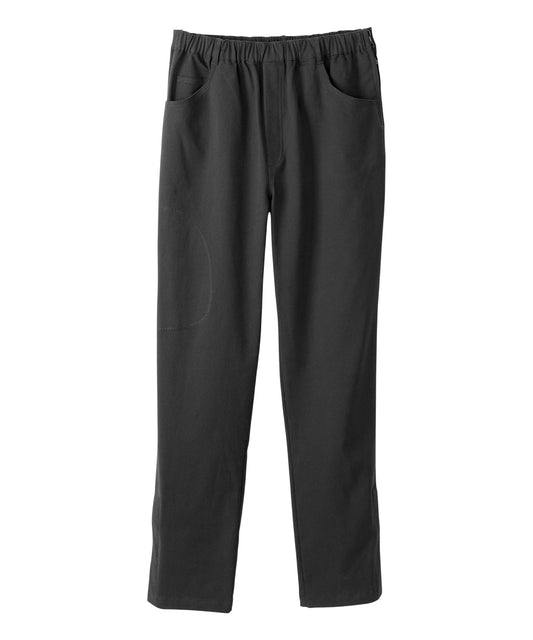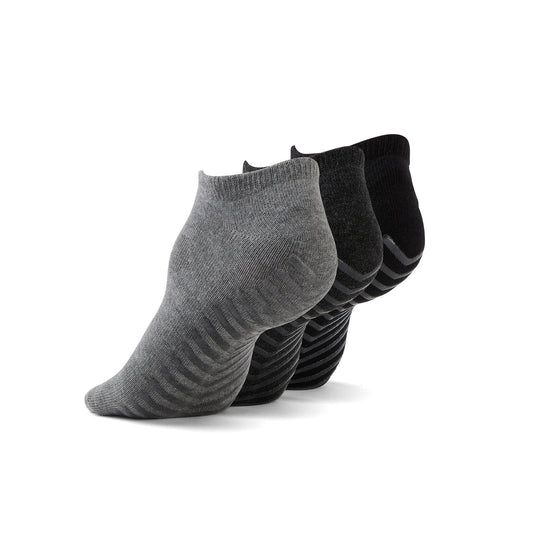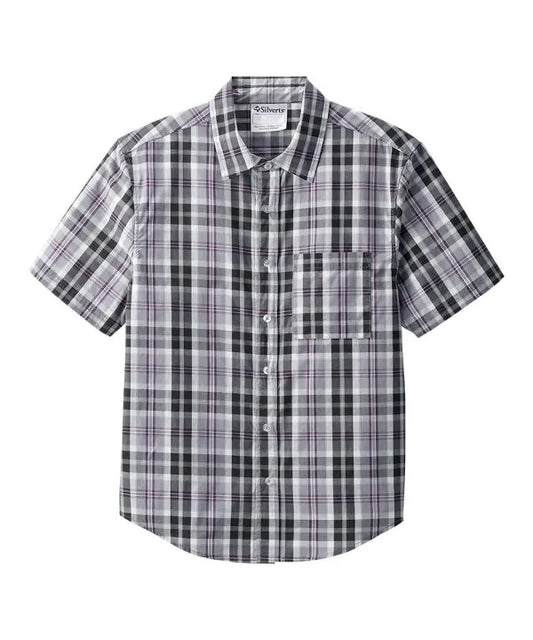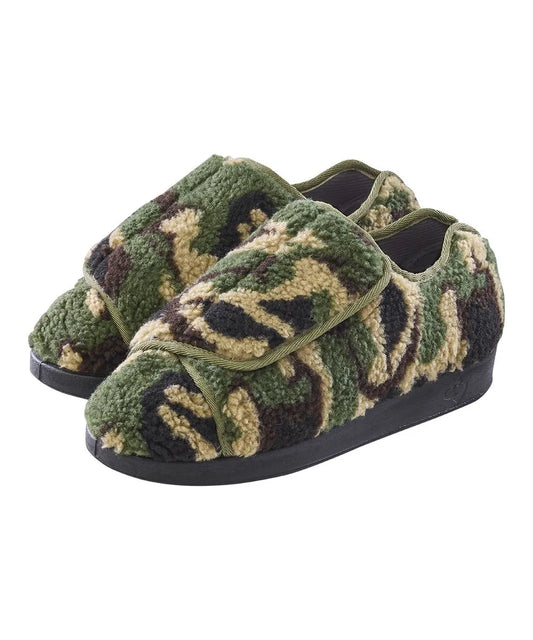Written by: Arbaaz Ebrahim
How does adaptive clothing help people with disabilities?
Getting dressed is something many people take for granted—but for individuals with disabilities, it can be a daily challenge. Buttons, zippers, tight fits, and stiff fabrics can turn a simple morning routine into a frustrating, time-consuming task. That’s where adaptive clothing comes in. Designed with accessibility in mind, adaptive fashion makes dressing easier, faster, and more comfortable, helping people regain independence and confidence in their daily lives.
One of the biggest ways adaptive clothing helps is by removing physical barriers. Traditional clothing often requires fine motor skills, flexibility, and strength, which can be difficult for individuals with mobility challenges, arthritis, or neurological conditions. Adaptive clothing solves this by incorporating magnetic closures, Velcro fastenings, and easy-open designs that eliminate the need for struggling with tiny buttons or tricky zippers. Instead of wrestling with clothing, people can dress quickly and with ease.
Adaptive clothing is also designed to enhance comfort throughout the day. Many individuals with disabilities experience sensory sensitivities, chronic pain, or difficulty regulating body temperature. Soft, tag-free fabrics, seamless construction, and breathable materials ensure that clothing feels good against the skin. Features like adjustable waistbands and side-open designs prevent discomfort caused by stiff or restrictive clothing.
Beyond comfort and function, adaptive clothing empowers people with disabilities by promoting independence. Many individuals rely on caregivers or family members to help them get dressed, but with adaptive fashion, they can regain control over their morning routine. Something as simple as being able to zip up a jacket without assistance or put on shoes with one hand can have a huge impact on self-confidence and quality of life.
And let’s not forget about style. There’s a common misconception that adaptive clothing is plain or clinical-looking, but brands like June Adaptive are proving that accessibility and fashion can go hand in hand. With sleek designs, trendy cuts, and a variety of colors, adaptive clothing allows people with disabilities to express their personal style without sacrificing function.
At its core, adaptive clothing is about inclusivity, independence, and making life easier. Whether it’s a seamless pullover for someone with sensory sensitivities, pants with side zippers for wheelchair users, or a magnetic-closure dress shirt for someone with limited dexterity, these small innovations make a world of difference. By simplifying the dressing process, adaptive clothing helps people with disabilities start their day with confidence, comfort, and ease.
Do adaptive clothing items make dressing and undressing easier?
Absolutely! Adaptive clothing is designed specifically to remove the struggles of traditional dressing, making it easier, faster, and less stressful for people with disabilities. Whether it’s someone with limited mobility, chronic pain, or a caregiver assisting a loved one, the right clothing can transform the dressing experience from frustrating to effortless.
One of the biggest ways adaptive clothing simplifies dressing is by eliminating the need for fine motor skills and excessive movement. Traditional clothing often relies on small buttons, tricky zippers, tight neck openings, or inflexible waistbands—all of which can be major obstacles for individuals with arthritis, Parkinson’s, stroke recovery, or other mobility limitations. Adaptive fashion replaces these challenges with smart, easy-to-use alternatives.
For example, instead of a standard button-up shirt, someone with limited dexterity can opt for a June Adaptive Magnetic Closure Dress Shirt that looks identical to a traditional one but fastens effortlessly. Instead of pants with a standard zipper and button, a person with limited mobility can choose side-zip or Velcro-adjustable trousers that slide on with ease. Even shoes are being reimagined, with hands-free sneakers and slip-on designs that eliminate the hassle of laces.
Adaptive clothing also takes seated dressing into account, making it significantly easier for wheelchair users or those who spend most of their time sitting. Many adaptive pants, jackets, and tops are designed with seated positioning in mind, featuring back overlaps, side openings, or extra stretch to accommodate movement restrictions. This means fewer awkward struggles, less pain when dressing, and more independence.
Caregivers also benefit greatly from adaptive clothing innovations. For individuals who require assistance when dressing, adaptive designs reduce strain on both the caregiver and the wearer. Items like open-back tops, wrap-around skirts, and front-fastening bras allow caregivers to help someone get dressed without excessive lifting, bending, or maneuvering. This not only speeds up the process but also enhances comfort and dignity for the person being dressed.
Another game-changer is sensory-friendly clothing. For individuals with sensory processing disorders, autism, or chronic pain conditions, the wrong clothing can feel unbearable. Scratchy fabrics, stiff seams, and itchy tags can turn dressing into a nightmare. Adaptive fashion takes this into account by using soft, tagless, and seamless materials that feel gentle against the skin, helping to reduce discomfort and anxiety when getting dressed.
The beauty of adaptive clothing is that it offers options for all kinds of needs—whether it’s someone recovering from surgery, an individual with a long-term disability, or a person who just needs an easier way to get dressed. By removing unnecessary barriers, adaptive clothing allows people to start their day feeling confident, comfortable, and in control.
What Are the Best Adaptive Clothing Features for Easy Dressing?
Not all clothing is created equal—especially when it comes to making dressing easier for people with disabilities. The best adaptive clothing is designed with both function and style in mind, incorporating thoughtful features that remove common dressing challenges and promote independence. Whether it’s for self-dressing or caregiver assistance, here are some of the most game-changing features that make getting dressed a breeze.
Magnetic and Velcro Closures
Say goodbye to tiny buttons and stubborn zippers! Magnetic closures are a revolutionary feature in adaptive clothing, making shirts, jackets, and pants effortless to fasten. Instead of fumbling with small buttons or hooks, wearers can simply press the fabric together and let the magnets do the work. Velcro closures work similarly, offering quick and secure fastening without the need for fine motor skills.
Elastic Waistbands and Side-Zip Pants
Traditional pants with rigid waistbands, buttons, and zippers can be frustrating for those with limited mobility or dexterity. Elastic waistbands provide a comfortable, pull-on design that requires no extra effort, making dressing and undressing much easier. For those who need additional accessibility, side-zip pants allow individuals to get dressed while seated or lying down, eliminating the struggle of pulling pants up over the hips.
Open-Back and Overlapping Designs
For individuals with limited arm mobility or those who require caregiver assistance, open-back tops and dresses are a game-changer. These designs feature overlapping fabric in the back, secured with Velcro or snap closures, allowing the wearer to be dressed without needing to lift their arms overhead. This is especially beneficial for those with conditions like arthritis, stroke recovery, or ALS, where movement can be restricted.
Tagless and Seam-Free Fabrics
Sensory sensitivities can turn everyday clothing into a source of discomfort. Itchy tags, rough seams, and stiff fabrics can be unbearable for individuals with autism, fibromyalgia, or chronic pain conditions. That’s why many adaptive clothing brands, including June Adaptive, prioritize tag-free, seamless, and ultra-soft fabrics to provide a comfortable, irritation-free experience.
Adaptive Footwear
Shoes can be one of the hardest things to put on without assistance, but adaptive footwear solves that issue. Slip-on shoes, no-tie sneakers, and hands-free footwear allow individuals with limited mobility to put on their shoes without bending down or needing fine motor control. Brands have even introduced stylish adaptive sneakers with zippers along the sides for easy access, combining fashion with function. Check out June Adaptive’s Women's Supportive Memory Foam Shoes with Front Zipper Access!
Women's Supportive Memory Foam Shoes with Front Zipper Access
Adjustable Sleeves and Hemlines
People with disabilities often have unique fit requirements, and adjustable clothing allows for a more personalized and comfortable fit. Features like roll-tab sleeves, adjustable hemlines, and expandable waistbands provide flexibility, ensuring that clothing is both stylish and practical for different body types and mobility needs.
At its core, adaptive clothing is about making life easier without compromising on comfort or style. Whether it’s a Velcro-fastened jacket, side-zip pants, or a magnetic-closure shirt, these features remove unnecessary obstacles and give people the freedom to dress with ease, confidence, and independence.
How Can Adaptive Clothing Save Time in the Morning?
Mornings can be hectic for everyone, but for individuals with disabilities, getting dressed can add extra time and frustration to an already busy routine. Struggling with buttons, zippers, or stiff fabrics can make the process take far longer than it should. Adaptive clothing changes that. By incorporating easy fastenings, pull-on designs, and thoughtful construction, adaptive clothing helps people get dressed faster, with less effort and more independence.
One of the biggest time-savers in adaptive clothing is magnetic closures, Velcro fastenings, and side zippers. Traditional buttons and hooks can take minutes to secure, especially for those with limited dexterity or arthritis. Magnetic shirts, Velcro-fastened jackets, and side-zip pants cut down dressing time significantly by eliminating small, hard-to-grasp fasteners. Instead of fumbling with tiny buttons, wearers can simply snap their clothing into place in seconds.
Adaptive clothing also speeds up the process by eliminating unnecessary steps. Many styles are designed to be slipped on effortlessly—whether it’s elastic-waist pants that pull up without buttons or tagless, stretchable tops that slide on smoothly. This is especially helpful for individuals with limited mobility, as it removes the struggle of pulling clothing over the head or stepping into tight-fitting garments.
For individuals who require help with dressing, adaptive clothing makes the process easier for both the wearer and the caregiver. Open-back shirts, side-fastening pants, and wrap-around dresses allow caregivers to assist with dressing without excessive lifting or maneuvering, cutting down dressing time while maintaining dignity and comfort. Check out June Adaptive’s Women's Cardigan with Open Back!
Women's Cardigan with Open Back
Shoes can be one of the most time-consuming parts of getting dressed, especially for individuals with mobility challenges. Adaptive footwear, such as no-tie sneakers, hands-free slip-ons, and zippered shoes, removes the need for bending, tying, or struggling with laces. With designs that allow wearers to step right in and go, adaptive footwear eliminates delays and makes mornings smoother.
Conclusion: Dressing Should Be Effortless for Everyone
At the end of the day, everyone deserves a morning routine that’s quick, stress-free, and comfortable. Adaptive clothing isn’t just about accessibility—it’s about empowering individuals with disabilities to dress with ease, confidence, and independence. By eliminating frustrating barriers and introducing smart, time-saving features, adaptive clothing ensures that getting ready in the morning is no longer a struggle, but a seamless and enjoyable experience. To learn more about adaptive wear, check out the JuneAdaptive website: https://www.juneadaptive.com/


















